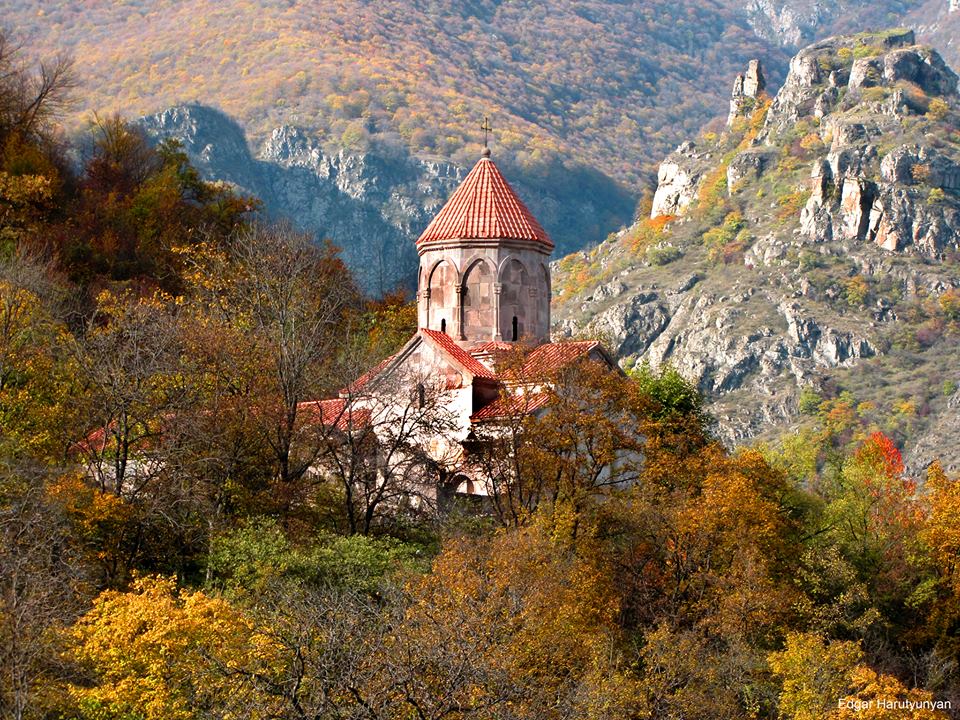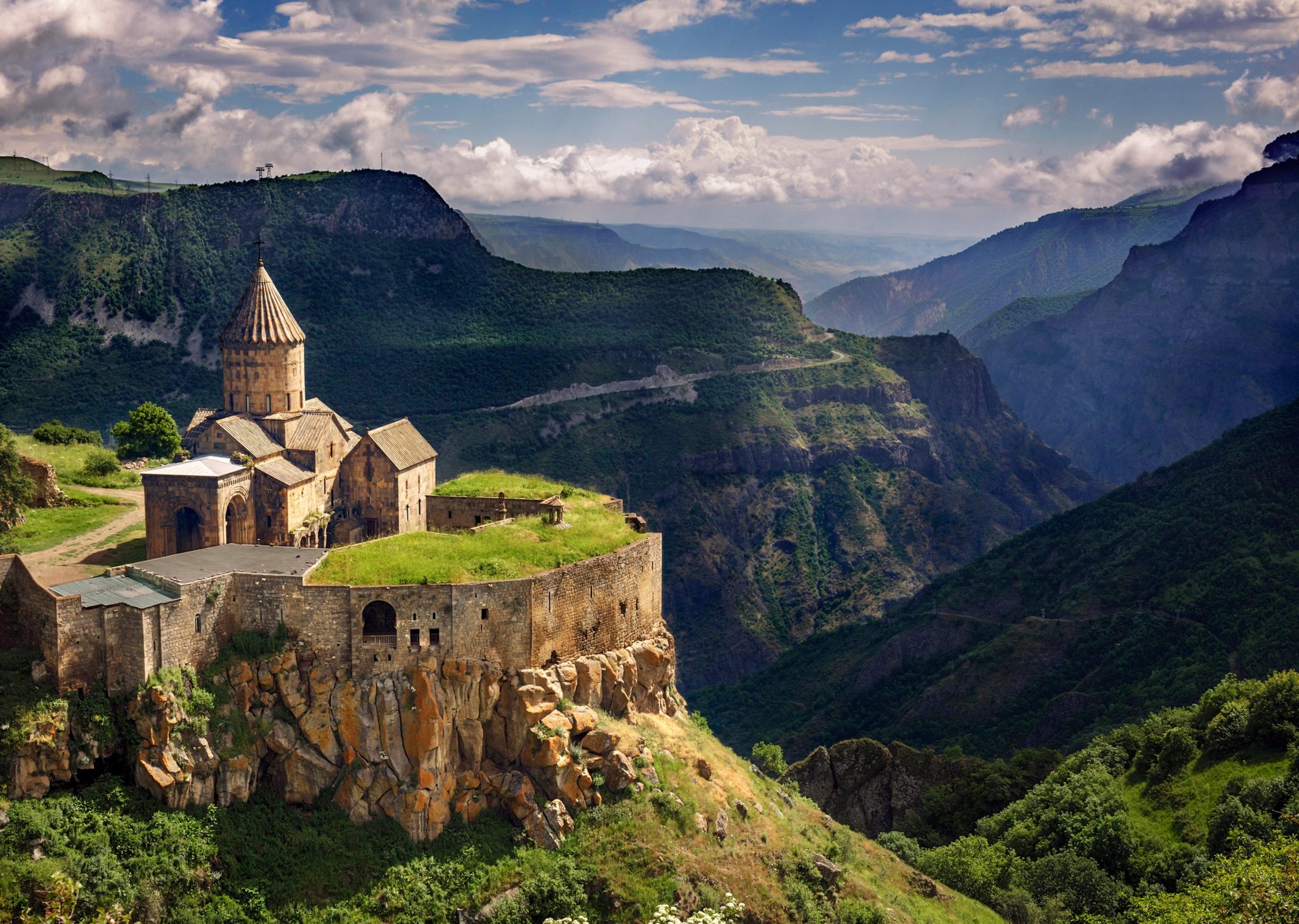Armenia State Religion–The first Christian nation
The first nation to adopt Christianity
In 301 Christianity in Armenia was adopted as the state religion. Gregory the Illuminator played an important role in this matter and later became the first Catholicos of Armenia (326-330). And Trdat 3rd the Great (287-330), who before the adoption of Christianity was considered to be number one enemy of Christianity, was the king who accepted Christianity as the true religion.
King Trdat III and Gregory the Illuminator
According to the Armenian historians of the 5th century, in 287, King Trdat III arrived in the kingdom of Armenia to regain the throne of his father. In the temple of the pagan goddess Anahit, he made a sacrifice. Grigor (known as Gregory the Illuminator), king’s advisor and the servant had already accepted Christianity as the true religion and refused to make a sacrifice to a pagan goddess. After that, Grigor was imprisoned in Khor Virap dungeon, which was considered to be a prison for those who were sentenced to death. Later, King Trdat III gave the order to sentence all the Christians to death and arrest those who accepted the new faith as the main religion.
St. Hripsime and the holy virgins
The death of St. Hripsime and her holy virgins also have a connection with the adoption of Christianity in Armenia. According to the legend, Roman girls who accepted Christianity ran from Emperor Diocletian to the east. They found a shelter near the Armenian capital Vagharshapat.
King Trdat was attracted by the beauty of the virgin Hripsime and wanted to marry her, but, faced with a refusal, he brutally killed Hripsime and her friends. However, one of them, Nune (Nino), manages to escape to Iveria – to Georgia, where she continued to preach her religion. Thanks to the preaching of Nino, all Georgian people adopted Christianity, and for her deeds, she was canonized and named Equal to the Apostles.
Gregory the Illuminator and the madness of the king Trdat III
The death of St. Hripsime had a strong effect on the king Trdat III, and he became seriously ill. Trdat’s sister saw a dream, that only the imprisoned and sentenced to death Grigor can cure king’s madness. In order to heal the king, he was set free. Then he buried holy Hripsime and the other virgins. After the 66-days of preaching Gregory completely cures Trdat III king.
The adoption of Christianity in Armenia
After the miracle happened and the king was cured, he was baptized by Gregory the Illuminator and then he declared Christianity the state religion of Armenia. He did everything to spread Christianity in Armenia. And in order to get rid of pagan traditions, king Trdat III and Gregory the Illuminator destroyed pagan temples, building Christian churches instead. In 345, the first Armenian National Church Council was established in Ashtishat, where many orphanages, nursing homes, churches and schools were built. The Council also banned pagan burial, as Christians believed in the Afterlife.
Which Nation First Adopted Christianity?
The event of 301 in Armenia – the adoption of Christianity as a state religion, is fundamentally different from what happened in Byzantium in 312 – the official approval of Christianity by faith. According to the edict of Milan, the persecution of Christians and Christian communities was stopped, and Christianity was legalized as another religion with the right to exist, and the emperor Constantine himself was baptized much later.
Armenian Religion: Armenian church
The Armenian Apostolic Church is the national church of Armenia. Its spiritual and administrative centre is Echmiadzin, and the spiritual leader is the Catholicos of All Armenians. Today, the Catholicos of all Armenians is Garegin II. Armenia is considered to be an open-air museum of Christianity; there are many Christian monuments in Armenia: temples, churches, monasteries, khachkars (stone crosses), ancient manuscripts.
Armenian churches and monasteries were built throughout the country, on inaccessible mountain peaks, in deep gorges, in forests and other places. These monasteries serve as educational and educational centres, research sites, and everyone is amazed by their unique architecture, instructive history and mysterious spirit.
Bible in Armenia
Every year thousands of pilgrims and tourists visit these places. The first book, which was translated into Armenian, was the Bible, and it was translated in the V century. The Bible and the Gospel were repeatedly copied by Armenian clergymen. 20% out of the 14,000 ancient manuscripts stored in the Matenadaran are the Bible and the Gospel.
Along with the desire to save the ancient Christian traditions, Armenians constantly repeat the first sentence, written in their native language, as a commandment of the struggle for enlightenment and progress. “To know the wisdom and advice, to accept the words of the geniuses …” («ճանաչել զիմաստութիւն եւ զխրատ, իմանալ զբանս հանճարոյ»):








